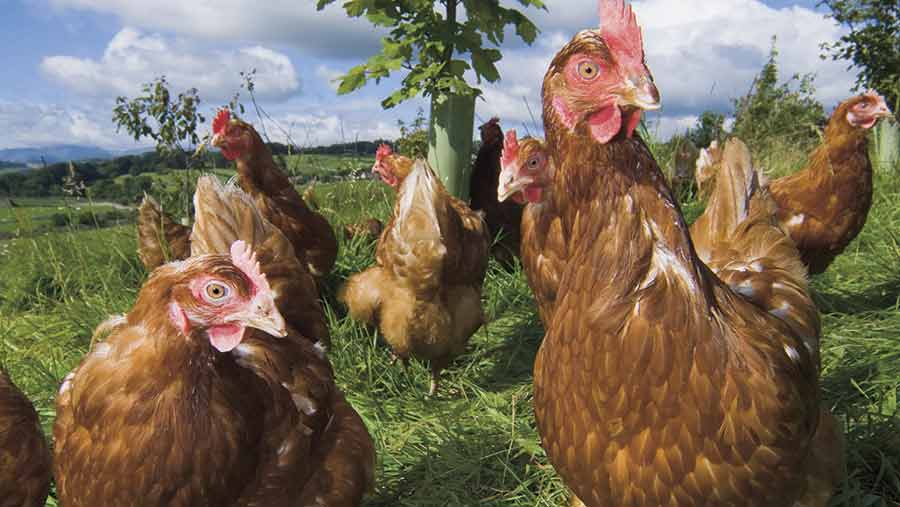Top feed and shed tips for egg farmers
 © Design Inc Pics Rex Shutterstock
© Design Inc Pics Rex Shutterstock Bob Waller was an agricultural manager for Freedom Food before becoming an independent consultant. His key piece of advice was planning ahead and paying close attention at every stage of hens’ lives. His top tips follow:
Before birds are first placed in a new shed, ensure pop holes are truly large enough to meet Freedom Food standards: “2m by 45cm means holes should be 2m by 45cm,” he says.
See also: Ensure bird welfare is right to reap multi-tier benefits
The same goes for electric fencing, if used to prevent smothering. Mr Waller said he had seen several farms where it ran across pop holes – hardly an incitement for birds to range
And bales and straw should be placed before birds: “It’s not great to put the birds in and just as they are settling in, to walk through the house with great big bales and scatter those around.”
Finally, perches should be sufficient for all birds to have space to perch.
First 10 days
This period is critical, according to Mr Waller. For multi-tier farms, most critical is putting birds up to roost each night. “If you don’t you will have floor eggs and seconds,” he said.
Walking the birds should be done slowly, but with purpose. “It’s very easy to get into the habit of just being too slow and at week 50 when you have a lot to do and it’s getting busy and you have another job, but you have to walk slowly because that’s what the birds are used to. You will find it takes a lot of time and effort. Get on with it.”
Water meters are your first sign of things going wrong. Monitor it every day, follow the trends. If anything happens to water consumption you know something is happening 24-48 hours ahead. Catching things early can save a great deal of cost.
Case study: James Baxter
Managing the gut and shed environment have seen huge performance benefits and cost savings for free-range egg farmer James Baxter.
Mr Baxter, who is currently Farmers Weekly’s Poultry Farmer of the Year, said in the four years he had used biomass to manage shed environments, and fed birds a probiotic, he “hadn’t spent a pound” at the vets because of bird illness.
“If you’re not feeding a probiotic, you are giving away performance from your hens,” he explained.
Mr Baxter said his staff, when packing eggs “notice within 24 hours if the probiotic is missing from the diet” – such is the improvement to shell quality they bring.
He incorporates the probiotic into rations with an on-farm mixer he has developed himself.
His second top tip for performance was improving the shed atmosphere. “Research has shown 23C is the optimal temperature for egg production, lower relative humidity is better for hens’ respiratory system, high carbon dioxide limits egg production.”
The answer was heat exchangers running in sheds, maintaining a turnover of fresh air and keeping temperatures up. Keeping heat in on cold days with minimum ventilation led to high ammonia, carbon dioxide.
Stale, slow-moving air harboured more pathogens, he suggested.
Mr Baxter added: “Since I started heating my hens and feeding probiotics, I’ve not spent a single pound at the vets over the last four years.”
